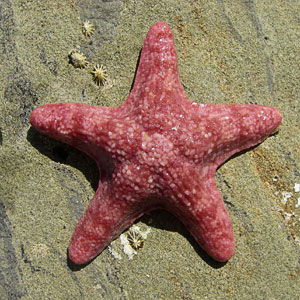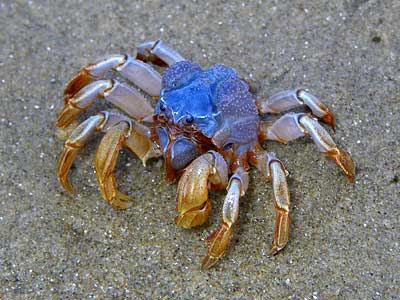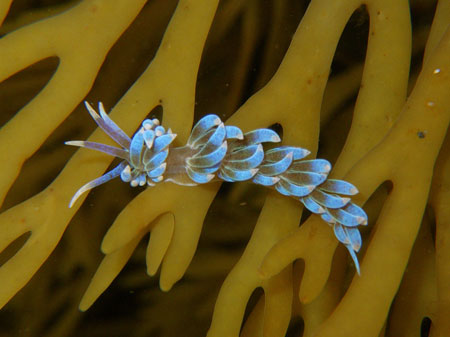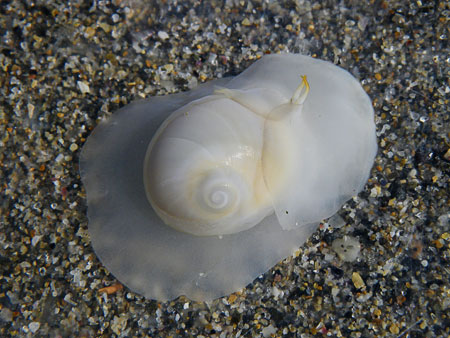About Marine Invertebrates

Sea-star (Paranepanthia grandis) at Hamers Haven
Photographer: J. Eichler
Marine invertebrates include a very diverse range of animals that lack an internal skeleton. They vary from highly mobile animals, such as squid, to those, such as corals and bryozoans, that are immobile and remain attached to rocks etc. They include well known animals such as sea stars, sea urchins, crabs, sea slugs and sea shells and their appearance can range from bizarre to beautiful. Many of the invertebrates that live along the southern coast of Australia are found nowhere else in the world.
Aims and Activities
The aim of The Marine Research Group (MRG) is to increase knowledge about the diversity, distribution and ecology of Victorian inter-tidal marine invertebrates.

Soldier Crab (Mictyris platycheles) at Beaumaris
Photographer: J. Eichler
Our activities are as follows:-
- The MRG's main focus is marine invertebrates; however, interesting fish, shore-birds and marine mammals are occasionally encountered.
- The Group conducts surveys in the intertidal zone at numerous locations along the entire Victorian Coast.
- Field trips are held in the warmer months, typically December to April, at the lowest tides. They usually include a mixture of day trips and extended trips of four or five days.
- Field trips typically attract 10 to 15 participants. Researchers, representatives from Museum Victoria, Parks Victoria, DEPI and local naturalists sometimes also attend.
- Various habitats are sampled including sand, mud and rocks. Rocky habitats, particularly those with 'seaweed' and seagrass, typically have the highest diversity of species.
- The Group compiles a record of species seen during each field trip and photographic images of many species are also made. The Group maintains a database of these records.
- On occasions the Group collects specimens for a variety of reasons (identification, scientific research, to document an extension of distribution) and these are preserved, labelled and submitted to Museum Victoria.
- The MRG benefits from the knowledge of those members, including some who are Honorary Associates of Museum Victoria, who are experts in particular animal groups.
- Observations and collections made by the Group contribute to knowledge published in scientific journals. Examples include papers on taxonomic reviews, the description of new species and reproductive strategies.
- The Group contributes numerous new records of species for Victoria and extensions to the known range of others.
- Other activities include regular meetings with presentations by guest speakers or MRG members, and work days at Museum Victoria to assist in curating the Museum's marine invertebrate collection.
- The Group produces illustrated guides for some animal groups. Those covered to date include crabs, chitons, bivalves and worms.

Sea-slug (Phyllodesmium macphersonae) at Inverloch
Photographer: J. Eichler

Sand-snail (Polinices incei) at Waratah Bay
Photographer: J. Eichler
For dates of meetings and other activities see the Calendar of Events.
